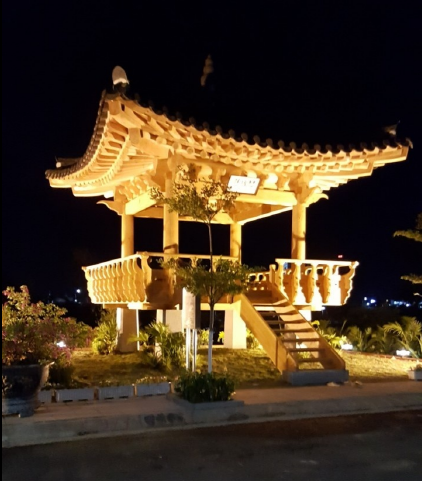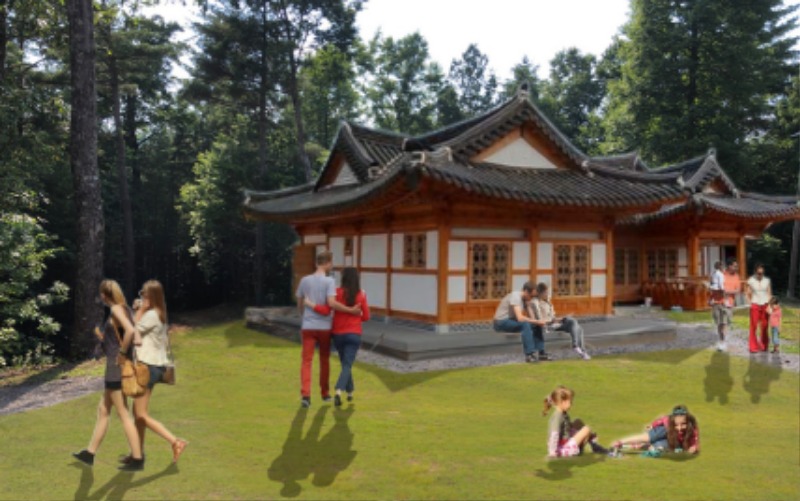 Nam Hae-Kyeong: Champion of Hanok, the Traditional Korean Houses
Nam Hae-Kyeong: Champion of Hanok, the Traditional Korean Houses
1. Please briefly introduce yourself.
My name is Nam Hae-kyeong, and I am a professor at the Department of Architectural Engineering and the Major of Hanok Architecture at Jeonbuk National University. I am also the head of the university’s Hanok Project Team (Traditional Korean House Architectural Engineering Workforce Education and Training Team) and a member of one of the Cultural Heritage Administration’s committees. I have served as the head of the Architectural Institute of Korea (AIK) and the Korean Institute of Rural Architecture, and as a member of the Presidential Commission on Architecture Policy.
2. Traditional Korean houses, or hanok, are exported to many countries around the world including Algeria, New Zealand, and the United States. How are things going with the hanok export?
In April last year, the first and only traditional Korean pavilion in Viet Nam was dedicated in Quy Nhon, and construction of a hanok-style public information house, a day care center, and an exhibition hall is underway there. Last January, the K-Town Project was completed in the heart of Manila in the Philippines, with the creation of a traditional Korean garden and pavilion. Preparations for the construction of a pavilion and garden in Algeria are complete, and the materials are currently waiting to be shipped to the North African country. We have received construction permits for 40 hanok on two sites of the US State of Georgia and are also designing a hotel and a restaurant. In Sydney, Australia, we are building a pavilion, a community center, and two residences. We are currently discussing similar projects in the Canadian city of Toronto, as well as in France, Indonesia, Mexico, New Zealand, and the US State of North Carolina.
3. The first hanok was exported to Algeria in 2020. How did it happen?
The last phase of hanok education as part of the work by Jeonbuk National University’s Hanok Project Team is building full-size traditional-style pavilions and residences. The finished buildings are donated to disadvantaged communities or public institutions. We have donated a score of such buildings so far. People from outside Korea, having seen them and found them attractive, have contacted us to inquire if importing such buildings was possible. Inquiries initially came from Germany and the Czech Republic but no deals were made. Then, we were contacted by our Algerian partner and the export began.
4. How are hanok received overseas?
Very well. On one occasion, when exhibiting a full-size hanok in the United States, a dean from the architectural college of a state university commented: “It is the first time I’ve seen Korean architecture, and I never knew that the building’s eaves curved so beautifully.” I have also heard people from outside Korea comment that China, Japan, and Korea share architectural similarities, but that the curve of Korean houses is the most exquisite. Last May, I paid a visit to Quy Nhon to check the hanok facilities we had built a year before and found that the traditional Korean pavilion had become a tourist attraction in the coastal city. It was wonderful to see tourists taking pictures in front of the pavilion. It is the same with the Philippines. While we were in the middle of the construction, we received inquiries from local residents if we could build Korean-style structures in their neighborhoods, and we are currently having consultations with some of them.
5. Are there differences between building hanok in Korea and in other countries?
There are lots of differences. When exporting hanok, we need to solve issues related to the main material of wood more than anything. Building the houses requires dry timber. For countries with a lot of rain, such as the Philippines, the dryness of the wood should be increased. For Algeria and other countries with less rain this is less of an issue. We ship timber after trimming it in Korea, and it stays on the ship for over a month. Therefore, it is extremely important that the wood is loaded in a way that prevents any alterations. We also ensure that it is protected from insects through fumigation and proper wrapping. Each of these issues need to be dealt with during hanok exportation, and those are the biggest differences between building the houses in Korea and in other countries. Currently, we are looking into the possibility of having the timber trimmed on-site for big projects in other countries that require huge volumes of wood.
6. What do you consider the most challenging part of exporting hanok?
There was almost no prior experience of exporting hanok before we did it, and it was quite difficult for us to meet the different conditions of the respective countries. For instance, if a country has building laws, earthquake-proof requirements, or other regulations that differ from those in Korea, we need to ensure that we comply with all such regulations. In countries like Australia and New Zealand, where termites can cause severe damage, we need to employ certain technologies to defend the wood against them. There is also the issue of customs. Despite exporting processed wood, it is treated as plant matter by customs, and the related regulations make it very difficult to obtain clearance. In fact, because of such problems, we experienced a six-month delay when exporting to the Philippines. We also deal with numerous other problems including those related to contracts.
7. What is the greatest appeal of hanok? Is there any part of these houses that non-Koreans find particularly enchanting?
The most appealing part of hanok is that their design is inherently eco-friendly, ecological, aesthetically pleasing, and comfort-oriented. Current global, architectural trends are centered around sustainability, and hanok are the Korean manifestation thereof. When entering hanok, you immediately pick up the scent of trees, as they are built mainly of wood and soil. Whether living in Korea or elsewhere, almost everyone loves this scent. Meanwhile, jjimjilbang—public bathhouses—have been growing in popularity among tourists in Korea, and there is an increased interest in ondol, the Korean floor-heating system, too. Despite its numerous merits, the true appeal of hanok is their beauty. The elegance of hanok is outstanding, with their curved eaves, the baeheullim (a technique for creating pillars with convex middles and narrow ends), and the precise yet minimalist approach to the essential materials used when creating the buildings’ frames. People outside Korea truly seem to appreciate these aspects of hanok’s beauty. Last but not least, people are drawn to the actual spaces crated within a typical hanok. In particular, daecheong, the main building’s wide, wooden-floor space that sits between the two major rooms, is a favorite among non-Koreans. Some like to commission an ample daecheong to fulfill their respective needs, and then install deulmun, doors that can be lifted up and hung from the ceiling as needed. People very much like to host parties in the daecheong after lifting the deulmun in that way.
8. What are your future plans and hopes for exporting hanok?
The Jeonbuk National University Hanok Project Team conducts education about traditional Korean housing in the school’s Gochang Campus—which is also called Hanok Campus—and produces and exports such houses from there. I want to transform the campus into a “Hanok Bauhaus.” The Bauhaus was a comprehensive arts school in Weimar, Germany, and is referred to as the first creative school in history. Recently, I have begun to promote the formation of a hanok exportation industrial complex to a local administration. Additionally, I plan to teach the art and craft of building hanok and other wooden structures to the posterity of Korean War veterans who helped Korea in difficult times; “Lai Dai Han,” children born to Vietnamese mothers and abandoned by their biological Korean fathers who served as soldiers during the Vietnam War; youths in developing countries; and North Korean refugees. My ultimate goal is to establish the best hanok institution in the world. By diversifying export destinations, I will stand at the forefront of the worldwide dissemination of “K-House” culture.

A traditional Korean-style pavilion exported to Viet Nam.

Prospective design for a hanok village to be created in Georgia, United States.
 KOREA FOUNDATION
KOREA FOUNDATION newsletter
newsletter












